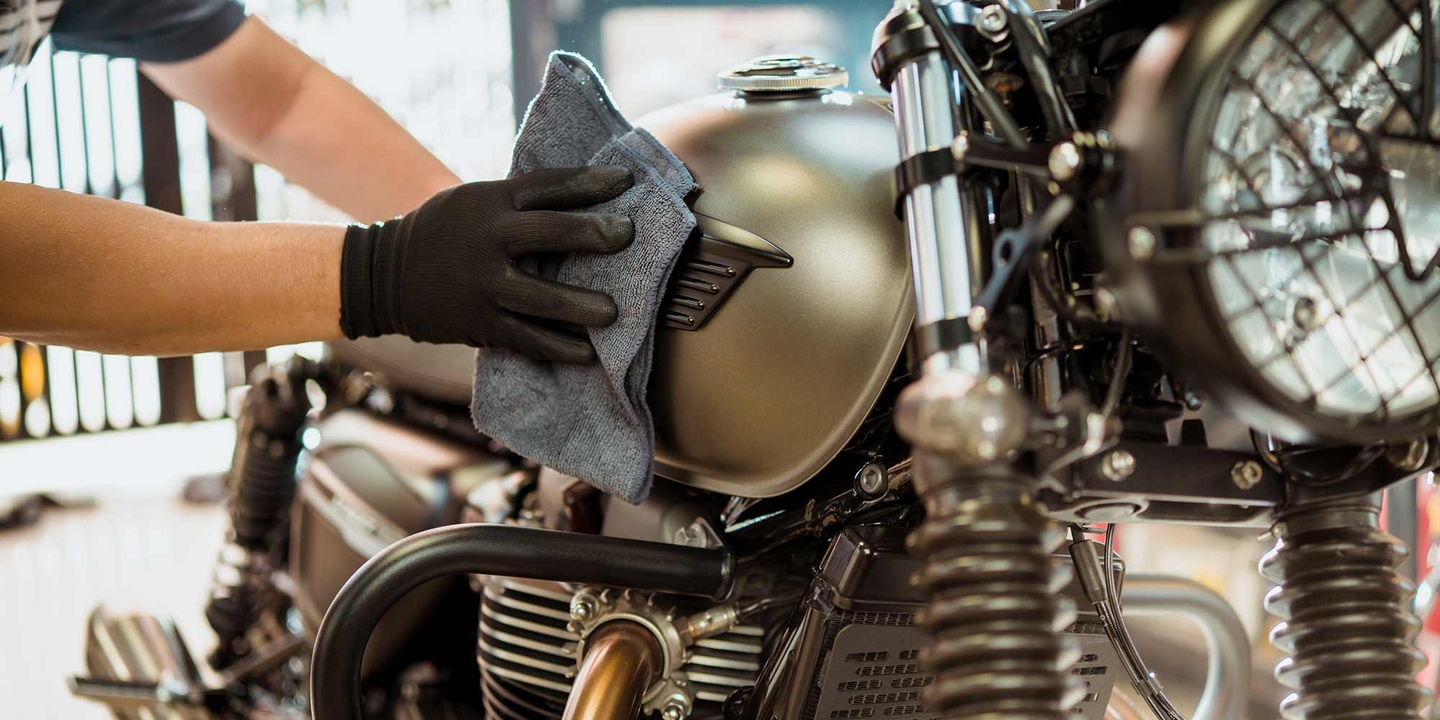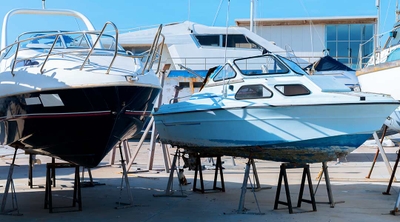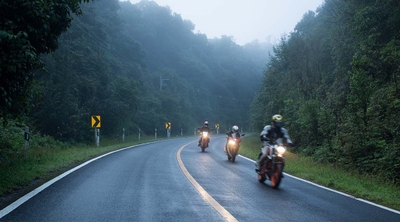Winterizing a motorcycle
3 min read
Winterizing your motorcycle is essential, especially if you live in an area with harsh winters or don't plan to ride your motorcycle during winter months. Winterizing can safeguard your bike, while in storage, from cold temperatures by building a protective coating on the chrome, leather, and engine parts.
Do you need to winterize your motorcycle?
Consult your owner's manual for recommendations from the manufacturer about winterizing your bike. If you don't have a motorcycle that is best for winter conditions, taking steps to properly winterize a motorcycle can help extend the life and performance of your bike.
How to winterize a motorcycle
Here is a checklist for preparing your bike for winter storage:
- Change the oil and filter: When oil gets old, contaminants can build up and harm the engine, so make sure to change the oil and filter before you store your motorcycle.
- Fill the tank: Topping off the tank prevents rust from forming in the lining. Adding a motorcycle winter fuel stabilizer helps keep the fuel fresh and prevents the carburetor from getting gummed up.
- Take care of the battery: When your bike is not being used and temperatures are low, your battery can lose charge. To keep your battery strong, disconnect it and store it in a cool, dry place. Connect it to a trickle charger to keep it charged over the winter.
- Clean and cover your motorcycle: Clean your bike thoroughly to remove dirt and grime to prevent corrosion buildup. Allow it to dry, wax it and treat the leather parts. Use a breathable non-plastic cover to protect it from dust and moisture.
- Protect the tires: Put the motorcycle up on a stand to take the weight off the tires and prevent a flat. If you don't have a stand, roll the tires around occasionally.
- Cover the exhaust and air intake: Stuff plastic bags into the exhaust and air intake and cover the openings to prevent rodents from climbing inside and building nests over the winter.
- Lubricate moving parts: Lubricate the chain, controls, and other moving parts with oil to protect them from moisture and rust.
- Choose a good storage location: Store your motorcycle in a cool, dry place away from sunlight such as a garage or storage unit.
What happens if you don't winterize your motorcycle?
If you're planning to store your bike over the winter, here's what could happen:
- Rust buildup and corrosion: Without winterizing, the metal components could suffer from rust and corrosion, requiring costly repairs.
- Fuel degradation: Fuel can degrade and oxidize while the bike sits unused, leading to clogged fuel lines and carburetors and poor engine performance.
- Shortened battery life: The battery will lose charge when it's not in use, especially in cold temperatures.
- Flat tires: Tires can go flat if the motorcycle sits in one spot for too long in low temperatures.
- Diminished engine health: Old oil can contain a buildup of contaminants and acids that can harm the engine if you leave it sitting for too long.
- Pest problems: Motorcycles stored in sheds or garages can attract pests and rodents seeking shelter.
- Trouble starting: Failing to winterize your bike may lead to difficulty getting it running again when the weather warms.
No matter the season, keep your motorcycle protected with a motorcycle insurance policy. Learn about how motorcycle insurance works and what motorcycle insurance covers.






